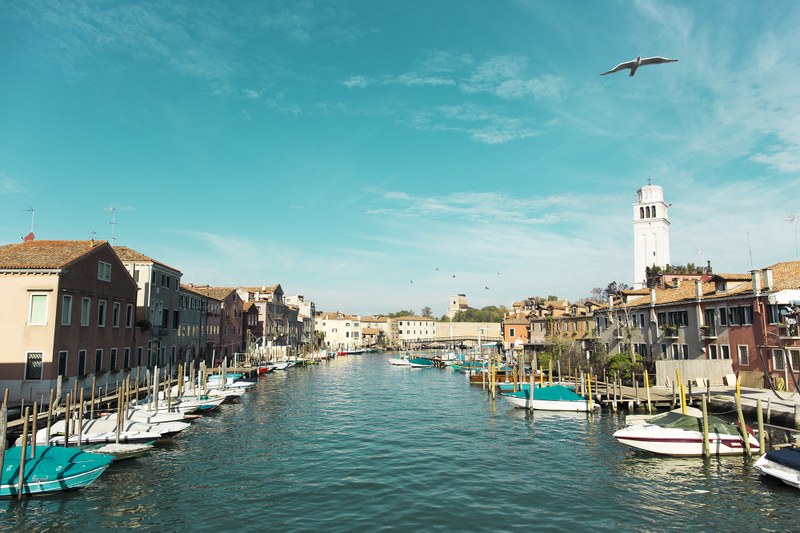Pollution, over-use and climate change threaten water resilience in Europe

Pollution, Habitat Degradation, and Climate Change Threaten Europe’s Water Bodies
Achieving the Sustainable Development Goals for Water
- Agriculture is the most significant pressure impacting Europe’s water bodies, according to the European Environment Agency (EEA) report ‘Europe’s state of water 2024: the need for improved water resilience’.
- Chemical pollution, primarily from coal-powered energy generation and agricultural activities, severely impacts Europe’s waters and aquatic ecosystems.
- Only 37% of Europe’s surface water bodies achieved ‘good’ or ‘high’ ecological status, and only 29% achieved ‘good’ chemical status over the 2015-2021 period.
Limited Progress to Date
While measures taken by Member States have prevented further deterioration of EU waters in some areas, overall improvement has not been achieved since the last monitoring cycle.
Europe’s groundwaters fare better than surface waters, with 77% in good chemical status and 91% in good quantitative status. However, pollution by pesticides and nutrients remains a concern.
The Way Ahead
Improving water resilience in Europe requires reducing water use and improving efficiency in agriculture, industry, and households. Target setting and monitoring progress towards water resilience are essential.
Pollution must be prevented in line with the objectives of the EU’s zero pollution action plan. Short-term actions should focus on reducing the use and release of harmful substances and nutrients into water bodies.
Nature restoration, such as reconnecting rivers and restoring wetlands and peatlands, can lead to healthier freshwater ecosystems that provide good quality water and mitigate the impact of extreme weather events.
About the Report
The EEA report is the largest assessment on the health of Europe’s water bodies, covering more than 120,000 surface water bodies and 3.8 million km2 of groundwater area across the EU and Norway. The report is based on data reported from 19 EU Member States and represents a significant portion of water bodies in the EU.
All key results and reported data can be found in the WISE Freshwater information system.
The EEA report complements the upcoming European Commission assessment of River Basin Management Plans and Flood Risk Management Plans, which evaluate the implementation of the Water Framework Directive and the Floods Directive in the EU.
SDGs, Targets, and Indicators
-
SDG 6: Clean Water and Sanitation
- Target 6.3: By 2030, improve water quality by reducing pollution, eliminating dumping and minimizing release of hazardous chemicals and materials, halving the proportion of untreated wastewater, and substantially increasing recycling and safe reuse globally.
- Indicator 6.3.2: Proportion of bodies of water with good ambient water quality.
-
SDG 15: Life on Land
- Target 15.1: By 2020, ensure the conservation, restoration, and sustainable use of terrestrial and inland freshwater ecosystems and their services.
- Indicator 15.1.1: Forest area as a proportion of total land area.
-
SDG 13: Climate Action
- Target 13.1: Strengthen resilience and adaptive capacity to climate-related hazards and natural disasters in all countries.
- Indicator 13.1.1: Number of deaths, missing persons, and directly affected persons attributed to disasters per 100,000 population.
Analysis
1. Which SDGs are addressed or connected to the issues highlighted in the article?
The issues highlighted in the article are connected to SDG 6 (Clean Water and Sanitation), SDG 15 (Life on Land), and SDG 13 (Climate Action).
2. What specific targets under those SDGs can be identified based on the article’s content?
Based on the article’s content, the specific targets that can be identified are:
- Target 6.3: Improve water quality by reducing pollution and minimizing the release of hazardous chemicals and materials.
- Target 15.1: Ensure the conservation, restoration, and sustainable use of terrestrial and inland freshwater ecosystems.
- Target 13.1: Strengthen resilience and adaptive capacity to climate-related hazards and natural disasters.
3. Are there any indicators mentioned or implied in the article that can be used to measure progress towards the identified targets?
Yes, there are indicators mentioned in the article that can be used to measure progress towards the identified targets:
- Indicator 6.3.2: Proportion of bodies of water with good ambient water quality.
- Indicator 15.1.1: Forest area as a proportion of total land area.
- Indicator 13.1.1: Number of deaths, missing persons, and directly affected persons attributed to disasters per 100,000 population.
Table: SDGs, Targets, and Indicators
| SDGs | Targets | Indicators |
|---|---|---|
| SDG 6: Clean Water and Sanitation | Target 6.3: Improve water quality by reducing pollution and minimizing the release of hazardous chemicals and materials. | Indicator 6.3.2: Proportion of bodies of water with good ambient water quality. |
| SDG 15: Life on Land | Target 15.1: Ensure the conservation, restoration, and sustainable use of terrestrial and inland freshwater ecosystems. | Indicator 15.1.1: Forest area as a proportion of total land area. |
| SDG 13: Climate Action | Target 13.1: Strengthen resilience and adaptive capacity to climate-related hazards and natural disasters. | Indicator 13.1.1: Number of deaths, missing persons, and directly affected persons attributed to disasters per 100,000 population. |
Source: eea.europa.eu








